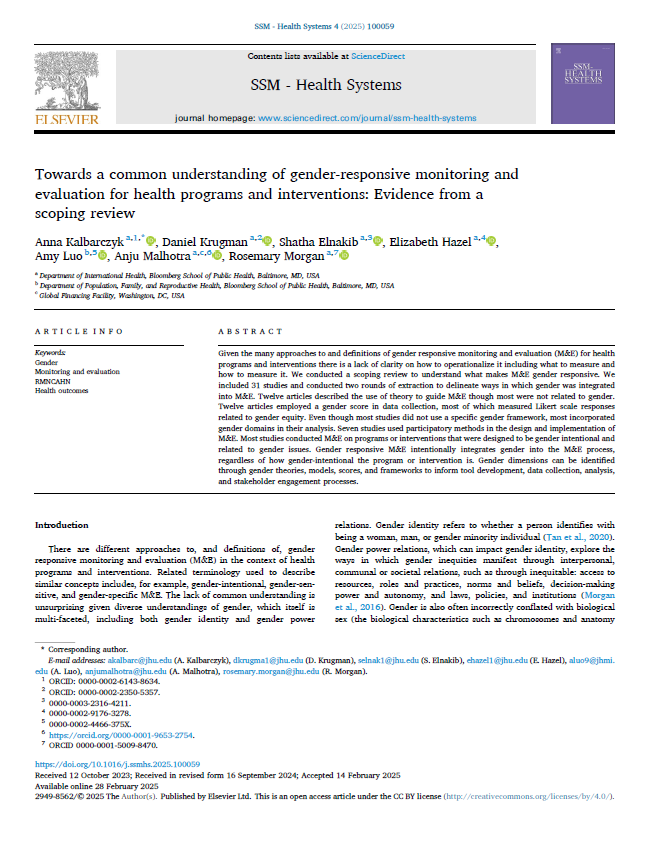Towards a common understanding of gender-responsive monitoring and evaluation for health programs and interventions: Evidence from a scoping review

This article published in SSM – Health Systems is a scoping review that explores how gender is integrated into monitoring and evaluation (M&E) processes within health programs, particularly those focused on reproductive, maternal, newborn, child, and adolescent health and nutrition (RMNCAHN).